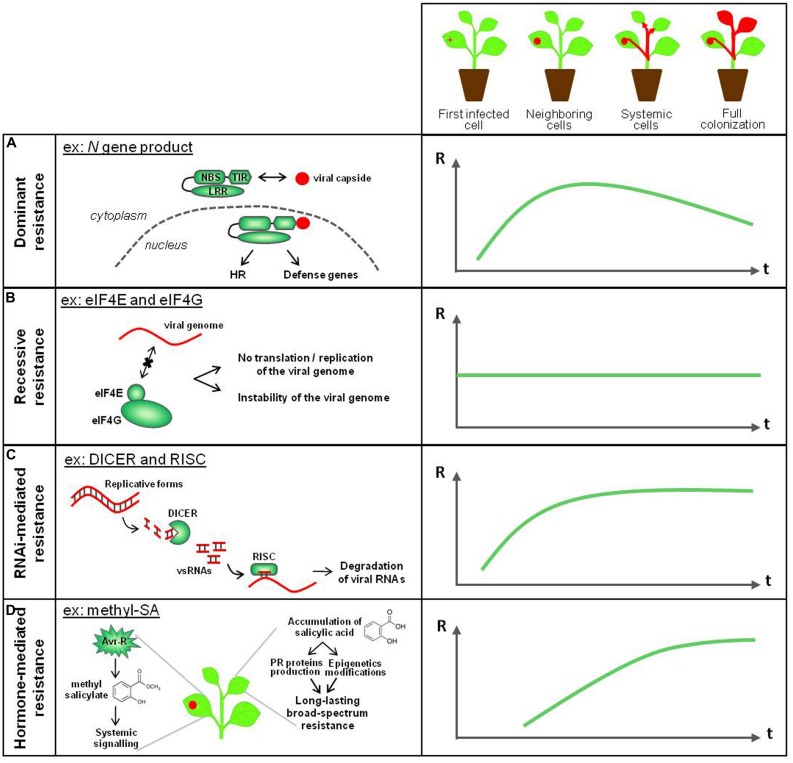FIGURE 2.
Known antiviral immune mechanisms in plants. Plant resistance mechanisms against viruses are complementary in terms of plant defense timing, location (from the first infected cell to the generalized colonization) and targeting the virus-derived molecules (genome or proteins from viruses). (A) NBS-LRR dominant resistance relies on the interaction between an avirulence factor and a specific R gene product, and is effective several days after the virus entry into the plant. The HR-associated phenomenon confines the viral pathogen in the infected and neighboring cells. (B) Recessive resistance, that corresponds to the absence of appropriate host factors that are required for the virus cycle, is a non-inducible resistance, passive and effective throughout plant colonization. It confers resistance at the infection step that requires the cellular factor of interest.(C) RNA interference (RNAi) targets viral nucleic acids. Once set up after few days, the effectiveness of this defense mechanism increases and spreads to the whole plant through a relay-amplification process. (D) Hormone-mediated resistance against viral pathogens is represented here by the role of salicylic acid (SA) and methyl-salicylate (Me-SA) in systemic acquired resistance (SAR). On graphs, R, resistance level; t, infection timing.

